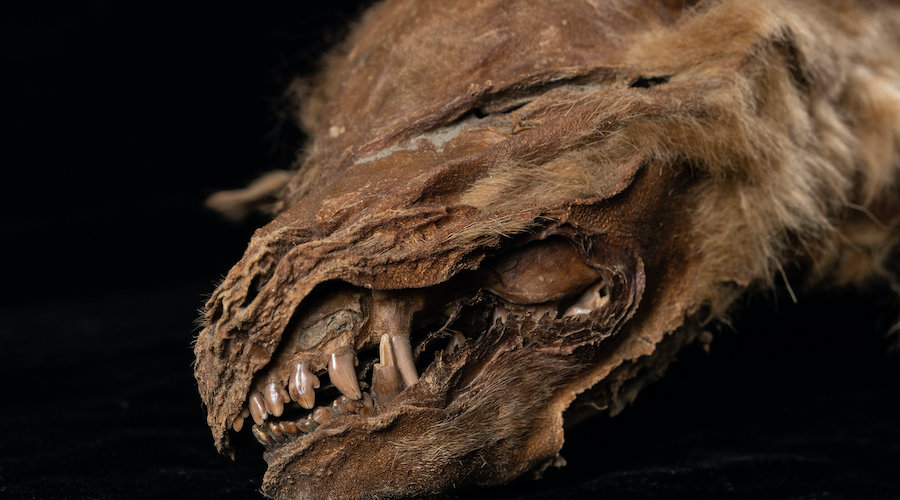From ancient pups to warships – miners find more than just ore


In their search for precious metals, gemstones, sources of fuel, and even the trendy battery metals, miners have come across treasures that even though have nothing to do with what they were initially looking for, are still invaluable.
From Canada to Serbia, these treasures are linked by a unifying feature: they connect us with our ancestors and help us build a higher resolution picture of what our planet looked like thousands of years ago.
In 2012, archeologists working at the Kostolac coal mine in eastern Serbia, found bones corresponding to at least five woolly mammoths, which disappeared about 10,000 years ago.
Eight years later, Kostolac made headlines again due to an archeological discovery dating back to the Roman era. This time, it was three shipwrecks estimated to have been buried for at least 1,300 years and which were discovered by a group of mineworkers.
The vessels were considered to be part of a warship fleet operating near what was Viminacium city, a base for Roman warships on the Danube River.
Buried in an ancient riverbed under several metres of mud and clay, the largest ship was nearly 50 feet long and had an estimated capacity of 30 to 35 crewmembers. The two smaller vessels, on the other hand, match descriptions of boats used by Slavic groups to ferry across the Danube and attack the Roman frontier.
In 2016, Neil Loveless, a placer miner working for Favron Enterprises in the Klondike goldfields in Canada’s Yukon territory, was blasting a hydraulic water cannon at frozen mud when he discovered a near-perfectly preserved female gray wolf pup that died 57,000 years ago.
Named Zhùr by the local Tr'ondëk Hwëch'in people, the wolf pup mummy was recovered along a small tributary of Last Chance Creek when the hydraulic thawing exposed the permafrost sediment in which it was preserved.
Since Zhùr is almost 100% intact, it gave researchers a wealth of insights about her age, which was estimated at seven weeks old; her lifestyle as a salmon-eater, and her relationship to modern wolves, who have a different genetic signature, which indicates that Zhùr’s population - more connected to relatives in Eurasia and Alaska - was eventually wiped out and replaced by another.
In 2011, four placer miners working on a Dominion Creek mining site near Dawson City, also in Canada’s Yukon territory, found a 47.5-thousand years old bone in Pleistocene permafrost sediments.
Initially thought to be part of a small lion’s bone structure, it was later identified as belonging to a scimitar cat, a type of sabre-tooth cat whose canines are shorter and have serrated edges.
After mapping the complete DNA of the pre-Ice Age animal, it was in 2020 when the scientists at the University of Copenhagen studying the specimen were able to decipher some of its traits.
They discovered that scimitar-toothed cats were highly skilled hunters, had a very good daytime vision, displayed complex social behaviours and had genetic adaptations for strong bones and cardiovascular and respiratory systems, meaning they were well suited for endurance running.
Another key finding emerging from the fossil was the cat’s mother and father were only distantly related, which probably means there were more of the animals than previously thought.
In 2008, Dr. Ross MacPhee of the American Museum of Natural History picked a couple of odd-looking bones from a pile of typical Ice-Age mammal fossils at a gold mine on Hunter Creek, just outside of Dawson City, Yukon during fieldwork. The bones turned out to be those of a rare western camel that lived between 75,000–130,000 years ago.
The ancient animal was identified after extracting preserved DNA from its bones. This work, carried out by researchers at the University of California, allowed to reconstruct the family tree for the western camel, the last known camel species to live in North America and which went extinct in the continent around 13,000 years ago when climates were warming, glaciers melting, and environments rapidly changing.
The findings indicated that western camels, part of a family that originated in North America 40 million years ago, are more closely related to living dromedary and Bactrian camels, commonly found in desert regions, than to llamas and alpacas, nowadays restricted to South America.
In 2020, Japanese scientists discovered that a large deposit of rare earths near the island of Minamitorishima is linked to the existence of fossilized fish.
By looking at fragments of bones and teeth, the researchers were able to determine that 34.5 million years ago, ancient global climate change and certain kinds of undersea geology drove fish populations to specific locations. As remains of the fish fossilized, they accumulated valuable elements and these fossil beds became concentrated deposits of rare-earth elements and yttrium (REY).
As the fish died and underwent fossilization, REY metals in the environment, which would otherwise remain diffuse, accumulated inside the fossils, which formed a deposit over 5 kilometres below sea level.
This article was originally posted on www.Mining.com.
Comments